This is the reason I’m glad I hadn’t thrown away my basil plant.


Sorry, that was the best pun-based title I could come up with, let me know in the comments if you can think of a better one.
Anyway, this is my basil plant…

The last leaves fell off this week, and whilst the top still looks slightly green, I’m pretty sure it’s dead now (or at least not going to recover from its current predicament).
I think I’ve had this basil plant for around 5-6 years, although it’s not produced any leaves worthy of being used in any recipes for the last couple of years. I bought it from a supermarket, and when it grew too big for its original pot, I replanted it into a bigger one. When it grew too big for that, I split it into two different pots. (Technically I guess it was several plants, but it all came in one original pot, so I’m calling it one plant.) The other pot died about a year ago, just leaving this one. I’ve trimmed the bits off as they’ve died, leaving the last remaining ridiculously long stalk. It’s often been appearing to die out before new branches spring up, but this time I think it’s actually the end (it’s never lost all it’s leaves before).
My cooking book advises that basil has a lifespan of “a few months”, so it’s done surprisingly well, although as I said, it’s not been useable for cooking for a while. It also says that it should be watered “in the morning”, but I don’t think I’ve ever specifically done that. I never know how often to water it, so I think it fluctuated between over-watered and under-watered, but maybe that balance helped it out. (The book also says that if it flowers, the plant is about to die, but mine has flowered multiple times.)
Sadly that’s the end of this basil plant. It’s survived far longer than expected (including the great fungus gnat infestation of 2017), but it’s literally outlived it’s usefulness now. At some point I’ll buy a replacement, but until then, I’ll just have to look back on the great memories we shared…
I mentioned a couple of weeks ago that I was taking this week as holiday. One of the suggestions of things to do was baking. I’ve previously made cupcakes and brownies, but I’ve never baked bread before, so it was something that I thought I’d try.
A friend recommended the Lékué Silicone Bread Maker which is a simple to use all-in-one bowl for hand-making bread. (This post isn’t sponsored, but Lakeland, if you want to get in touch…)
I gave it a go earlier this week. I was really expecting this to go one of two ways. Either:
I always thought that bread needed to be kneaded for hours [pun intended], however the recipe said to “knead until you obtain an homogenous, uniform and elastic dough”, which seemed to happen a lot sooner than I expected. It was very sticky though, and the internet suggested this was because I had added too much water but it should still be ok. I did decide to gave it a few more minutes of kneading just to be sure though.
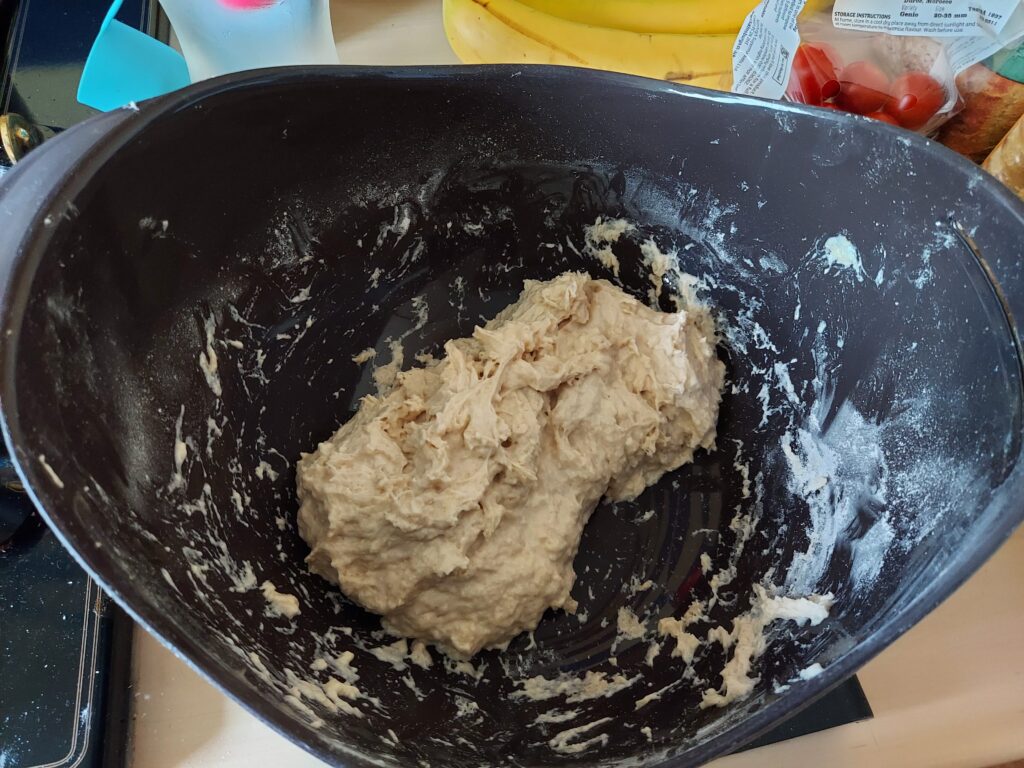
But what I hadn’t realised was how long the dough needs to be left to prove before baking. In total, the recipe called for the dough to be left for about 3 hours to rise, which if I had planned better, I would have started earlier so that it was ready for lunch.
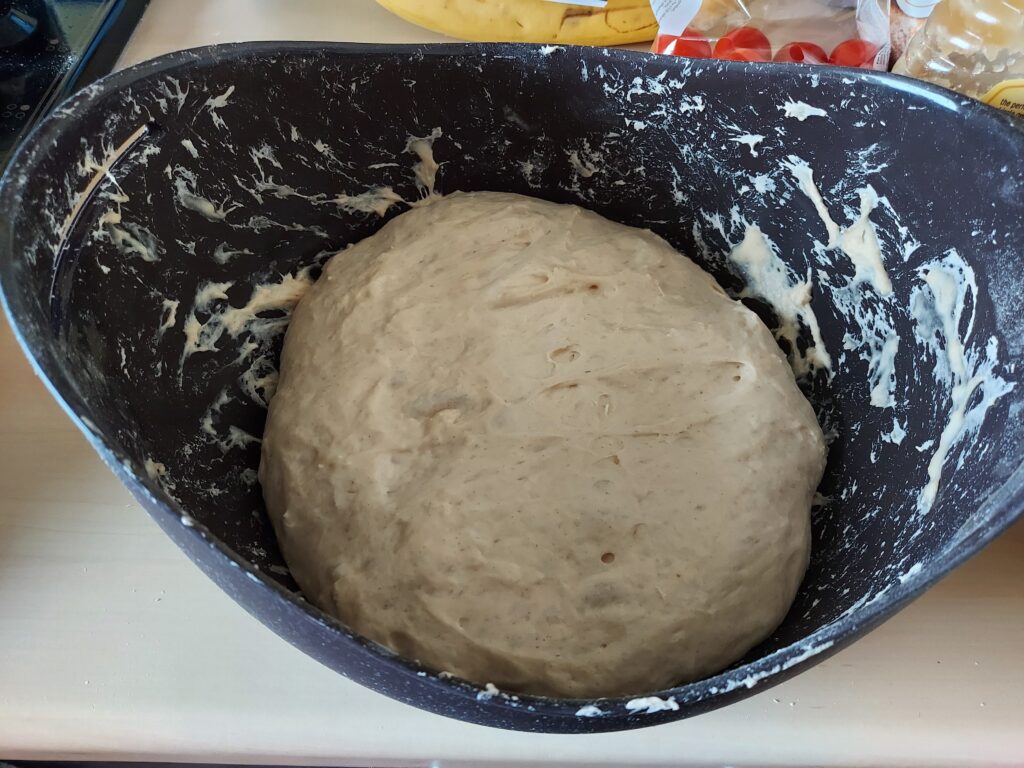
Half an hour later, I took it out of the oven and was pleasantly surprised. It both looked and smelt like bread. It also tasted like bread, and whilst not mind-blowlingly tasty, it felt good to have made it myself.
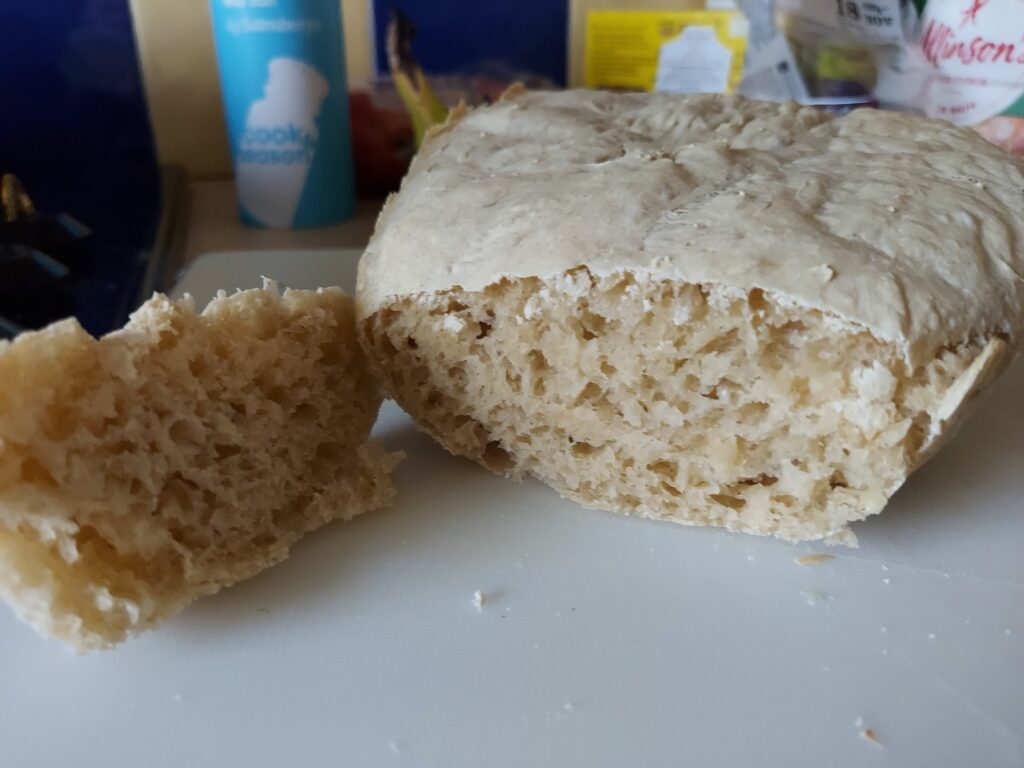
My only comment was that it is a very flat loaf of bread. I don’t know if was the recipe that I was following, or if I had done something wrong (not kneading it enough?), or whether this is just a limitation of the bread maker. But it is very tasty when lightly toasted and served with some butter and my homemade spicy vegetable soup.

Let me know any tips for making bread (or tips for improvement!), or suggestions for bread types you’d like to see me make!
So here we are, the final day of my holiday at home. Having woken up late and having somewhere else to be mid-afternoon, I didn’t have much time.
There was however one Monday-Friday only museum that I wanted to visit during this week, the Metropolitan Police Heritage Centre.
To get over to West London, I had to take three Overground trains, having to zig-zag across South London to get to West Brompton.

The museum is very small and only took about 5 minutes or so to look around, which was good as I didn’t have much time. The sign on the door implied that it was only open by appointment, whereas the website states that appointments are appreciated. When the man inside saw me peering through the door, he happily let me in. I wasn’t even the only person there in this small museum, as a group of three other people turned up when I was inside. The photo below pretty much shows the entirety of the museum.
* Your working hours will be eight, ten or twelve hour shifts, seven days a week. No rest days are allowed and only one week holiday per annum, unpaid.
* Every encouragement will be given to grow beards, as shaving is regarded as unhealthy. However, beards must not exceed two inches in length.
* You are NOT allowed to sit down in public houses at any time. [Does this include standing?]
* No meal breaks are allowed, the top hat may be used to hold a snack.
* Before attending for medical examination and interview to join the police it is advisable to have a bath.
Having seen most of the items in a few minutes (there wasn’t much to read), I headed back for my afternoon appointment. I decided to take a different route home, using the District line to Wimbledon where I changed to Tramlink. This was my first trip on London’s tram system and I planned to explore more of it and then get the bus home, however I realised I was quickly running out of time so transferred back to the Overground to complete the loop.

And I would have been back in time, if my afternoon engagement hadn’t been cancelled.
Several months ago I bought some fish from my local Food Assembly. Not having much clue what to do with so much fish, I put most of it in the freezer. Today seemed liked the perfect opportunity to use up one of the dabs I had stored.
Searching the internet, I came across Jamie Oliver’s recipe for Mediterranean-style Dab with bacon, olives, tomatoes and pine nuts. Surprisingly, this recipe was incredibly easy to follow and I completed it in the same time as stated (30 mins). The hardest part was eating it, given the amount I had on the plate (I served it with salad and new potatoes), and also the bones in the fish. A successful meal to round off the week.
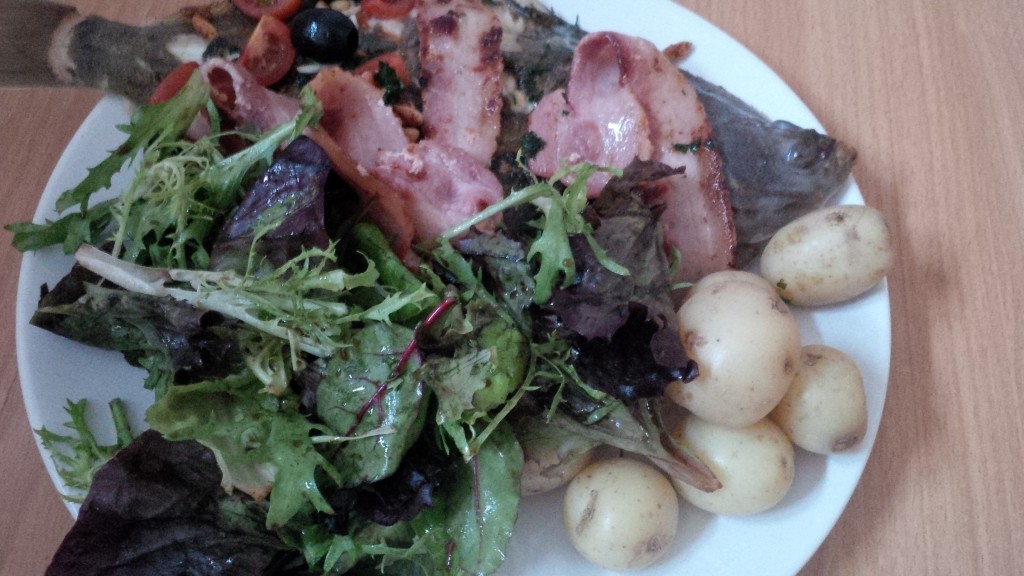
Today I headed back into the City of London for a tour of Guildhall.
First though, I popped into the church of St Lawrence Jewry next door, which is actually a very recent church building, rebuilt after being bombed in WW2. The Jewry part of the name refers to this being in the Jewish part of the city until 1290.
Our tour guide, Pat, advised that this tour only lasts an hour, but could easily last well over two, so would be fairly rushed. We were also told that photos could be taken but discretely, so apologies that the interior photos are taken on my phone rather than my camera.
The tour started in the Great Hall which was being set up for the afternoon’s Court of Common Council meeting. A few members of the group were training to be Blue Badge Tourist Guides and were scribbling frantically in their notebooks. The remainder of us just listening as Pat explained all the statues in the hall and the symbolism of all the particular objects. The main theme within the entire building is of history and tradition, combined with rebuilding following the Great Fire of London and the Blitz. Many of the rooms have changed usage over the various centuries although most of them are used as meeting rooms today, mainly to be hired out to businesses or for wedding receptions.
My meal for this evening was another one suggested by colleagues at work – kebabs.
I chose to make two different kebabs: “Chicken kebabs” from “Nosh for graduates“, and “Yogurt-Marinated Chicken Kebabs with Aleppo Pepper” from Serious Eats.
Both of these recipes wanted to make a marinade which the chicken would then soak in for a few hours before cooking. This made the cooking process seem less onerous as it broke it down into two distinct parts. The recipes were designed for BBQs and large quantities so I reduced all of the ingredients in each by about 60% as I only planned on making two skewers of each. I did make a few deviations from the recipe. In the first recipe I swapped mushrooms for courgette, and, whilst writing this, I realised that I missed out the red pepper. In the second recipe I used smoked paprika and dried crushed chili peppers as the first step. I also swapped red wine vinegar for white wine vinegar as that’s what I already had, although I’m sure it made absolutely no difference.
I then grilled the kebabs on my George Foreman grill (which will now need a lot of cleaning) and served it with pitta bread and hummus. I did look at making my own hummus, however since I don’t own a food processor or a blender or a pestle and mortar (and no intention of buying any of them just for this) I didn’t. It was a fairly simple recipe and it all tasted good.
My initial plan for today was to attend a talk on Benjamin Franklin’s experiments with a kite and lightning at Benjamin Franklin House.
However, one the other attractions I wanted to visit this week was the London Fire Brigade museum. This is only open Mondays to Fridays, and also happens to be closing down at the end of this month. When I found out that the only way to see this museum (at least in full, and without waiting a few years whilst a new museum is built) was this morning, I decided to choose this museum over the kite/lightning talk. [The Benjamin Franklin House is still on my to-do list, but it is open at weekends too.]
The museum is in two parts, the first part is based in the original fire appliance shed from the mid-19th century where there’s a selection of old fire appliances from the early hand carts to more modern fire engines. The first appliance we were shown was an 1860s manual pump that required 20 people to operate. Since there weren’t that many firefighters, locals were given beer tokens in exchange for helping out. Apparently it was very popular!
The second part of the museum is housed within the adjoining house, originally occupied by the first London Fire Chief, Eyre Massey Shaw. This had a more structured museum type structure with exhibits and placards, however since this was a tour we didn’t get to read most of it and were instead shown a few key items in each room. The tour I was on had some descendants of James Braidwood (Massey Shaw’s predecessor) so the tour focussed on some of these elements. There was also a current firefighter on the tour so there was some discussion over the bits that had stayed the same since the beginning, and the bits that had changed (seemingly for the worse – the tour was given by an ex-firefighter). The World War 2 room contained two shells. There used to be 5 until a previous tour noticed that 3 of them were still live!
Since today is Wednesday, Great British Bake Off day, I decided to make a pie. I choose to do ‘Winter Warming Meat and Potato Pie with a suet pastry crust’ from “Nosh for Graduates”. I mainly followed the recipe, however I substituted some of the water for beer, simply because I thought this would be good, but I’m not sure if I could actually taste it at the end. The recipe took surprisingly longer than expected. The book reckons about 55 minutes total, but I started about 6 and it was well after 8 by the time I was eating. Maybe I just need more practice. I also hadn’t noticed that it said “serves 4” and found myself with a lot more pie than I was expecting. I actually made 3 pies, two of which are now waiting in the freezer for another time.
The only other issue I had was in making the dough for the top. The recipe says to roll out the dough and lift it on top of the potato layer. I’m not sure if I had it too runny, but I definitely couldn’t lift it, and resorted to using a spoon to place it on top. It all worked out fine though, and it was another successful (if delayed) meal.
Today’s adventure started off with a trip on the Overground…
Food-wise, today I decided to cook Mexican food. I could have just used a pre-made pack, but I wanted the challenge so I followed Jamie Oliver’s chicken fajitas with homemade salsa and guacamole. It was a lot of effort to make the dips and they are slightly chunkier than they could have been, but it did feel worth it after. For a quicker meal I might consider buying some pre-made sauces (unless it was a special occasion). I was hoping I would be able to freeze half of the chicken mix, so I added an additional chicken breast, however I should probably have added an additional pepper too. In the end I just ate it all in one go (apart from the dips). Doing some nachos as well would probably help with this.
I’m taking this week off work, and rather than going away anywhere, thought I’d stay in London. In the mornings I intend to explore London, ideally things that can’t be done normally on a weekend. In the afternoons I’m going to attempt cooking, something I don’t normally do but this week gives the time to practice.
Today’s plan was to go to the Bank of England museum, which is only open on Mondays to Fridays.
On the way from the station to the museum, I took some random back roads and came across the church of St Clement Eastcheap. This church is supposedly the one from the ‘Oranges and Lemons’ nursery rhyme. Half of the church is currently used by a couple of charities and I debated whether to actually push the buzzer to request to look around. What swayed me was an interesting looking exhibition that turned out to be focused on graffiti in Derry/Londonderry, mostly based on the Troubles. This led to a slightly awkward situation where I was reading display boards and taking photos, metres away from where people were working, but no-one said anything or paid any attention.
I then headed off towards Bank, however I decided to stop in the church of St Edmund, King and Martyr, now used by the London Spirituality Centre. This church was apparently bombed in the First World War, and some shrapnel from the bomb is now framed in the altar. The stained glass window was moved here in the late 1940s from a demolished London church. Apparently St Paul’s Cathedral turned it down because the angels in the picture have red wings, rather than white. I was also given a map of all 48 churches in the City. [Possibly a theme for future posts?]
Continuing my church exploring theme, I popped into St Michael Cornhill, where the organist was practicing for the 1pm organ recital. There wasn’t so much to look at here, other than the one man who was doing a crossword.
I then decided I needed to meet my main objective of going to the Bank of England museum.
The museum seems to focus on three main areas. The first part of the museum covers how banking works. This mainly focuses on the financial crisis, inflation and how interest rates are set. The main message of this was that banking is really hard and therefore it’s not always possible to get it right. To emphasise this fact, there are two challenges to attempt. The first is controlling a yacht and keeping it at the same speed whilst the wind and the current continually change. I thought I did quite well (once I got the hang of the complicated controls). However the game gave me a score of “3: Second Mate” and recommended I “never work in planning the bank rate”. The other game involved trying to balance a ball in a tube, whilst both sides seemed to raise/lower randomly. Again, it was surprisingly tricky and the bank rate fluctuated massively. I hope this isn’t how the bank rate is actually decided.

The second part of the museum looks at the history of the Bank, from its early days as an actual bank, to being a central bank which only lends to governments and other banks. Interestingly, staff members are allowed to have standard bank accounts here, and there is a counter specially for this. There is a lot covered here, and there is some repetition of stories as the museum covers the history of the building, the history of the Bank, and the history of bank notes.

The third part of the museum covers the development of bank notes, originally given as receipts for gold deposited with the bank, which started as “trust that the bank had the gold to repay the stated value”, but now simply certifies against “trust”. The exhibition shows a history of bank notes, from the very oldest all the way to the current day ones. There’s a lot of detail going into the security features of modern bank notes, explaining that forgeries have always been a problem (I checked my wallet, fortunately all legit). An interesting fact here is that any historic bank note can be exchanged at the Bank of England. It is however only worth what it’s written out for. So any £5 note will always be worth £5, even if it is 300 years old.
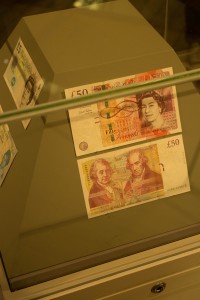
Speaking of gold, there is a section here that covers the Bank of England’s gold vaults. Every gold bar (technically a trapezohedron) weighs 13kg is designed for handling, and is stored upside down for this reason. There’s a gold bar here which is possible to attempt to lift up to see how heavy they actually are. Today, one bar of gold was worth £293,281 and the gold bar is firmly fixed in (and surrounded by CCTV) to prevent potential thieves.
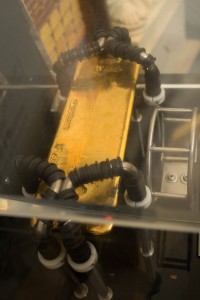
Which more or less finishes this morning’s adventures.
This afternoon, for the cooking part of my holiday, I decided to attempt Toad in the Hole, a popular choice when I asked for suggestions at work. It turned out fine, although I may use a different cooking dish next time, as it rose massively over the top of dish, and therefore not all of the “hole” was crispy (inside was still a bit batter-y). I think I would also do fewer potatoes next time. Otherwise this is a fairly simple meal that I may do again if I want something more exciting than plain sausages.
